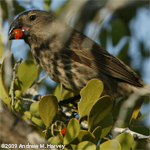Case Study - Darwin's Dying World
The Galapagos hidden from view

The Galapagos is a place where a battle for survival unfolds. Here on this remote sanctuary – 30,000 people now call Galapagos home, many servicing the needs of over 150,000 annual visitors on a quest to experience the wonder of this unique environment. We hear about the transformative power of this magical place. This unique area had a historical role in the development of Darwin’s evolutionary theories, and the archipelago has a unique ability to help us understand our role in the universe.
It is the magical draw of Galapagos that enables residents to earn a living on the islands. Tourists spend over 500 million dollars a year to see the famed tortoises, marine iguanas and Galapagos penguins – they come to experience the transformative power of Galapagos and walk in Darwin’s Footsteps.
Yet, all who set foot on Galapagos threaten the islands unique life with extinction. This is because the Iguanas, Penguins and Tortoises, that people come to see, depend on the archipelago's isolation for their survival.
Today this isolation no longer exists and the result is that 39% of the 109 animal species unique to Galapagos are considered threatened with extinction and 60% of 171 endemic plants are in peril. The problem is growing, despite consensus among governments and scientists, that it is vital to protect and preserve the Galapagos Archipelago.
Innocently enough we come to Galapagos to love it but in doing so, we will eventually destroy it.
The Galapagos were the laboratory for Darwin’s theory of evolution and now 175 years later the impact of people on the archipelago has led to a strange turn of events. We are now the species under the microscope in the planets living laboratory of evolution. Can people find balance between commerce and preservation and still survive on Galapagos?
If people won’t leave the islands, we need to succeed in proving our ability to live sustainably on them. Success in Galapagos would provide the world with a path to sustainability. Failure would mean the devastating collapse of the Galapagos ecosystem – a key lens on our history.
We put the islands life at risk and we need to explore what can be done to save it by restoring the environment and re-creating the bio-security that isolation once provided. (Adapted from the work of Andrew M. Harvey ©2010)
About the Film: Darwin's Dying World (6:14, Andrew M. Harvey, Producer/Director) is a short introductory work in anticipation of a full documentary on the subject of human impact in the Galapagos. It describes how quick action is urgently needed to forestall an ecological collapse in one of the most unique areas of the world. The work zooms out from the special natural beauty of the flora and fauna of the Galapagos – the almost universally recognizable natural splendor that catalyzed our understanding of biology – to capture the larger, more real picture coming into focus, where human impact can have devastatingly irreversible impacts. Presented with a compelling urgency, in the hopeful tone of a challenge to sustainability, the work seeks to ask the bigger question and to draw the line in the sand of this ecological wonder. It is here and it is now, and we can and must change. –GM

